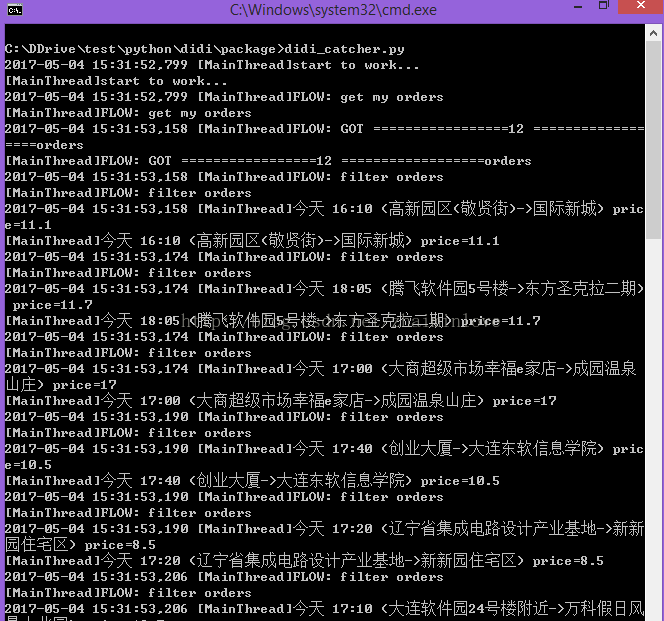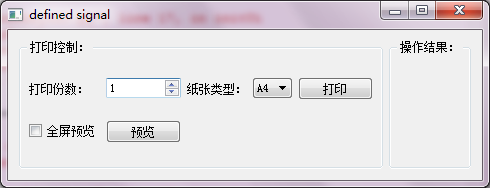Python使用pymysql模块操作mysql增删改查实例分析
本文实例讲述了Python使用pymysql模块操作mysql增删改查。分享给大家供大家参考,具体如下:
# -*- coding:utf-8 -*-
import pymysql
user = input('请输入用户名:')
pwd = input('请输入密码:')
# 1.连接
conn = pymysql.connect(host='127.0.0.1', port=3306, user='root', password='123', db='t1', charset='utf8')
print(conn)
# 2.创建游标
cursor = conn.cursor()
#注意%s需要加引号
sql = "select * from t1.userinfo where username='%s' and pwd='%s'" %(user, pwd)
print(sql)
# 3.执行sql语句
cursor.execute(sql)
result=cursor.execute(sql) #执行sql语句,返回sql查询成功的记录数目
print(result)
# 关闭连接,游标和连接都要关闭
cursor.close()
conn.close()
if result:
print('登陆成功')
else:
print('登录失败')
下面是执行过程
请输入用户名:lisi
请输入密码:123
<pymysql.connections.Connection object at 0x000001BEFABFE240>
select * from t1.userinfo where username='lisi' and pwd='123'登陆成功
二、execute()之sql注入
方式
#1、sql注入之:用户存在,绕过密码
lisi' -- 任意字符
#2、sql注入之:用户不存在,绕过用户与密码
xxx' or 1=1 -- 任意字符
请输入用户名:sdj;fja;' or 1=1 -- ;j;j;jj;jjkdsjfjsd
请输入密码:123
<pymysql.connections.Connection object at 0x000001EF2BE3E240>
select * from t1.userinfo where username='sdj;fja;' or 1=1 -- ;j;j;jj;jjkdsjfjsd' and pwd='123'登陆成功
解决:
1采用列表的方式
# 原来是我们对sql进行字符串拼接 # sql="select * from userinfo where name='%s' and password='%s'" %(username,pwd) # print(sql) # result=cursor.execute(sql) #改写为(execute帮我们做字符串拼接,我们无需且一定不能再为%s加引号了) sql="select * from userinfo where name=%s and pwd=%s" #!!!注意%s需要去掉引号,因为pymysql会自动为我们加上 result=cursor.execute(sql,[user,pwd]) #pymysql模块自动帮我们解决sql注入的问题,只要我们按照pymysql的规矩来。
2采用字典的方法
# -*- coding:utf-8 -*-
import pymysql
user = input('请输入用户名').strip()
pwd = input('请输入密码').strip()
# 连接服务端
conn = pymysql.connect(
host='127.0.0.1',
user='root',
password="123",
database='t1',
port=3306,
charset='utf8'
)
# -- ddadad
# 创建游标对象
cur = conn.cursor()
sql = "select * from userinfo where username = %(name)s and pwd = %(password)s"
print(sql)
# resultNum = cur.execute(sql,[user,pwd])
resultNum = cur.execute(sql,{"name":user,"password":pwd})
print(resultNum)
cur.close()
conn.close()
if resultNum:
print('登陆成功')
else:
print('登陆失败')
三、增、删、改:conn.commit()
commit()方法:在数据库里增、删、改的时候,必须要进行提交,否则插入的数据不生效。
基本框架
import pymysql
username = input('请输入用户名:')
pwd = input('请输入密码:')
# 1.连接
conn = pymysql.connect(host='localhost', port=3306, user='root', password='123', db='db8', charset='utf8')
# 2.创建游标
cursor = conn.cursor()
--------增删改操作----------------
#一定记得commit
conn.commit()
# 4.关闭游标
cursor.close()
# 5.关闭连接
conn.close()
增--》一组数据
sql='insert into userinfo(username,pwd) values(%s,%s)' effect_row=cursor.execute(sql,(username,pwd)) # effect_row=1
增---》多组数据
sql='insert into userinfo(username,pwd) values(%s,%s)'
effect_row=cursor.executemany(sql,[('赵八','112'),('刘九','114'),('封十','911')]) #effect_row=3
删
sql='delete from userinfo where pwd like "%2"' effect_row=cursor.execute(sql)
改
sql='update userinfo set username = %s where pwd="114"' effect_row=cursor.execute(sql,'niu') #effect_row=2
**上面的变量 effect_row=cursor.execute(...) ,返回的是成功改变的条目数字
四、查:fetchone、fetchmany、fetchall
表的内容
mysql> select * from userinfo; +----+----------+-----+ | id | username | pwd | +----+----------+-----+ | 1 | mjj | 123 | | 3 | 张三 | 110 | | 4 | 李四 | 119 | +----+----------+-----+ 3 rows in set (0.00 sec)
固定格式
import pymysql # 1.连接 conn = pymysql.connect(host='localhost', port=3306, user='root', password='', db='db8', charset='utf8') # 2.创建游标 cursor = conn.cursor() sql = 'select * from userinfo' cursor.execute(sql) ------------执行的查询-------------- # 4.关闭游标 cursor.close() # 5.关闭连接 conn.close()
fetchone查看一条符合条件的数据,可以连续使用,查询的是上一个fetchone的后面一条
# 查询第一行的数据 row = cursor.fetchone() print(row) # (1, 'mjj', '123') # 查询第二行数据 row = cursor.fetchone() print(row) # (3, '张三', '110')
fetchall():查询所有符合条件的数据
# 获取所有的数据 rows = cursor.fetchall() print(rows) #运行结果 ((1, 'mjj', '123'), (3, '张三', '110'), (4, '李四', '119')) 取到的返回值是元组
fetchmany:获取指定的条数数据
row=cursor.fetchmany(3) print(row)
cursor.scroll(num,mode='relative|absolute') 当mode=absolute时,num不能小于0
cursor.scroll(1,mode='relative') # 相对当前位置移动 cursor.scroll(2,mode='absolute') # 相对绝对位置移动
# 查询第一行的数据 row = cursor.fetchone() print(row) # (1, 'mjj', '123') # 查询第二行数据 row = cursor.fetchone() # (3, '张三', '110') print(row) cursor.scroll(-1,mode='relative') #设置之后,光标相对于当前位置往前移动了一行,所以打印的结果为第二行的数据 row = cursor.fetchone() print(row) cursor.scroll(0,mode='absolute') #设置之后,光标相对于首行没有任何变化,所以打印的结果为第一行数据 row = cursor.fetchone() print(row)
更多关于Python相关内容感兴趣的读者可查看本站专题:《Python常见数据库操作技巧汇总》、《Python数学运算技巧总结》、《Python数据结构与算法教程》、《Python函数使用技巧总结》、《Python字符串操作技巧汇总》、《Python入门与进阶经典教程》及《Python文件与目录操作技巧汇总》
希望本文所述对大家Python程序设计有所帮助。


